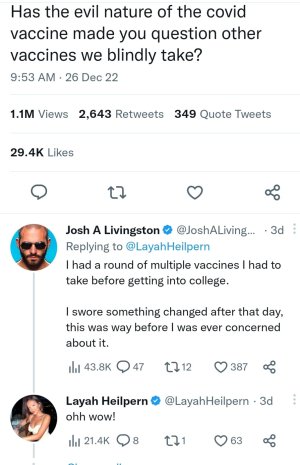The one data point that suggests both New York and California are getting coronavirus under control
Good news about the coronavirus is in short supply. The United States’ confirmed case count is
approaching half a million — more than triple any other country’s. The U.S. will soon lead the world in COVID-19 deaths as well. Roughly 95 percent of Americans are living under lockdown orders. No one seems to have
any real sense of how or when this will end.
But look a little harder and you can just start to discern a faint light at the end of this very dark tunnel. You just have to know where to look.
Ignore the skyrocketing case count, or at least take it with a grain of salt. As FiveThirtyEight’s Nate Silver
has explained, the number of positive tests reported in any given city, state or country is highly dependent on the number of tests conducted there — which differs wildly from place to place over time. Death tolls are more useful for comparing how the epidemic is evolving in different locales. But because it typically takes weeks for someone with COVID-19 to die, they’re also lagging indicators that tell you less about where on its epidemic trajectory the virus is now than where it was back then.
The number you really want to focus on is hospitalizations. And if it’s good news you’re after, pay particular attention to what’s happening in two key states: New York and California.
Until very recently, nationwide data about how many COVID-19 patients are currently receiving treatment in hospitals was hard to come by. It’s
still incomplete and inconsistent. But on April 7, researchers at the University of Minnesota
launched the U.S. COVID-19 Hospitalization Tracking Project, which is just what it sounds like: the first effort to capture, track, visualize and compare daily data on the number of COVID-19 hospitalizations from the 37 state departments of health that are reporting this information (so far).
The reason this information is so valuable is simple. Because hospitalization typically occurs a week or so after infection, it’s less of a lagging indicator than the death count (which trails by two to two and a half weeks) and more directly tied to the trajectory of the epidemic than the testing-dependent case count. It’s also a measure of the most pressing public health concern of all: how close we are to exceeding the capacity of our hospital system, which can make COVID-19 much deadlier than it would otherwise be.
Which brings us to New York and California. Chart each state’s hospitalization data over the last seven days or so, and two different narratives emerge.
Both are encouraging.
Each day this week, New York Gov. Andrew Cuomo has delivered a cautiously optimistic message at his morning briefing.
“We are reaching a plateau in the total number of hospitalizations,” Cuomo
said Tuesday. “You can see the growth, and you see it’s starting to flatten.”
“All of this data suggests we are flattening the curve so far,” he
added Thursday. “So far our efforts are working. They’re working better than anyone projected they would work.”
The hospitalization numbers tell the tale. On Wednesday, New York’s daily death count hit an all-time high: 799. But that reflects infections from weeks ago, before the state’s lockdown started. The number of people testing positive
stayed relatively flat.
Meanwhile, there were fewer new hospitalizations — just 200 — than on any day since March 18.
It wasn’t a blip. The amount of new daily hospitalizations has been declining since last Thursday: from 1,427 on April 2 to 1,095 on April 3 to 656 on April 6 to 200 on April 8. (There are some questions about inconsistencies between the data from New York state and New York City, but the trend line is the same.) Previously, the total current number of coronavirus patients in New York hospitals had been increasing by at least 20 percent a day for weeks. Now the overall number of hospitalizations is barely increasing at all.
On Friday, new hospitalizations ticked up slightly, but not enough to alter the curve — which, as Cuomo noted, “
is much, much lower than any of [the models] projected.”
That’s what Cuomo meant by a “plateau.” If current trends continue — and given
how conscientious New Yorkers have been about staying home, there’s no reason to think they won’t — total current hospitalizations should hover right around 18,000 to 20,000 for a while, well under the state’s expanded, 90,000-bed hospital capacity. Then, as new cases start to taper off, the number of COVID-19 patients in hospitals should decline. Hopefully, today’s plateau will become tomorrow’s peak.
Assuming that happens, New York’s hospitalization numbers will have been an early sign that the hardest-hit state in the U.S. is turning the corner and getting its coronavirus outbreak under control.
The story in California is different but also heartening. The Golden State’s hospitalization curve is not changing drastically like New York’s. In fact, it’s not changing much at all.
But that’s the good news.
On March 16, the Bay Area stunned the nation when health officers in six counties jointly ordered residents to stay indoors. Eleven other California counties soon joined the order, and on March 19 it was expanded statewide by Gov. Gavin Newsom — the first statewide lockdown in the U.S. By that time,
the virus had already spread widely in New York, the nation’s largest, most densely populated city. A lockdown there three days later came too late to slow its exponential growth.
California caught the coronavirus earlier in its trajectory. That fact is reflected in the case count (20,000 to New York’s 150,000) and the death count (550 to New York’s 7,000). But the hospitalization rate may be the most telling metric. Since the state began reporting hospitalization data at the end of March, total confirmed COVID-19 admissions — they
currently stand at 2,825, with another 2,803 suspected cases — have been rising by only 1 to 4 percent per day. That’s roughly the same slow and steady rate of increase Cuomo is now touting in New York as a plateau.
Except so far, California has been
all plateau. Meanwhile, on Wednesday, the number of COVID-19 patients requiring intensive care
dropped — by 1.9 percent, to 1,132 — for the first time since California began tracking them.
“It’s one point of data, but nonetheless it’s encouraging,” Newsom said. “It again reinforces the wonderful work we are all doing. The curve has bent in the state, but it continues to be stretched.”
This idea of “stretching” the curve is key. The good news in New York is that the state might be peaking now. The good news in California is that the state might not peak for a long time — but its path to that peak will be so incremental, its curve so flat, that coronavirus patients will never come close to overwhelming the hospital system.
Of course, this is happening only because both states have been in lockdown for weeks, at great cost to their economies. Both Newsom and Cuomo warn every day against what the latter recently described as “slacking off”; as soon as residents start to ease up on social distancing, the virus will have another opportunity to spread. For this reason, transitioning back into something that resembles normal life will be enormously complicated.
Nonetheless, the hospitalization numbers suggest — tentatively but hopefully — that that’s the direction both New York and California are heading in.
Good news about the coronavirus is in short supply. The United States’ confirmed case count is approaching half a million — more than triple any other country’s. But if it’s good news you’re after, pay attention to the hospitalization data in New York and California.

news.yahoo.com





































